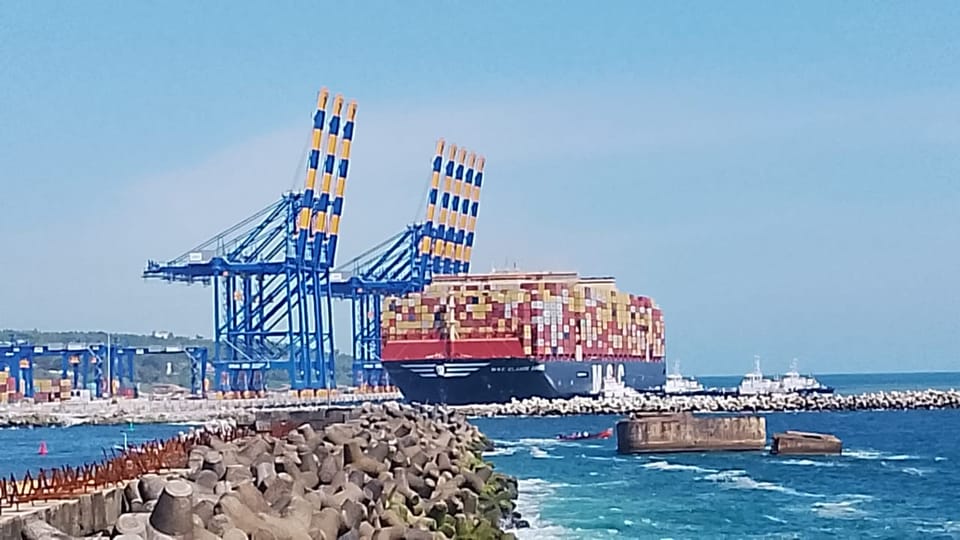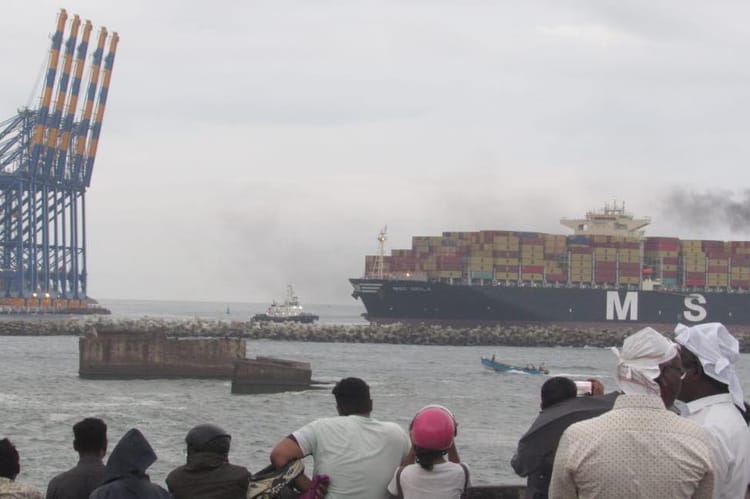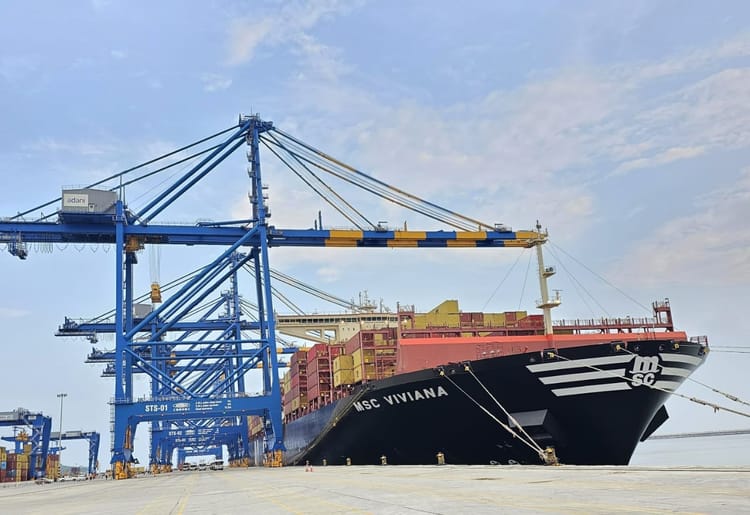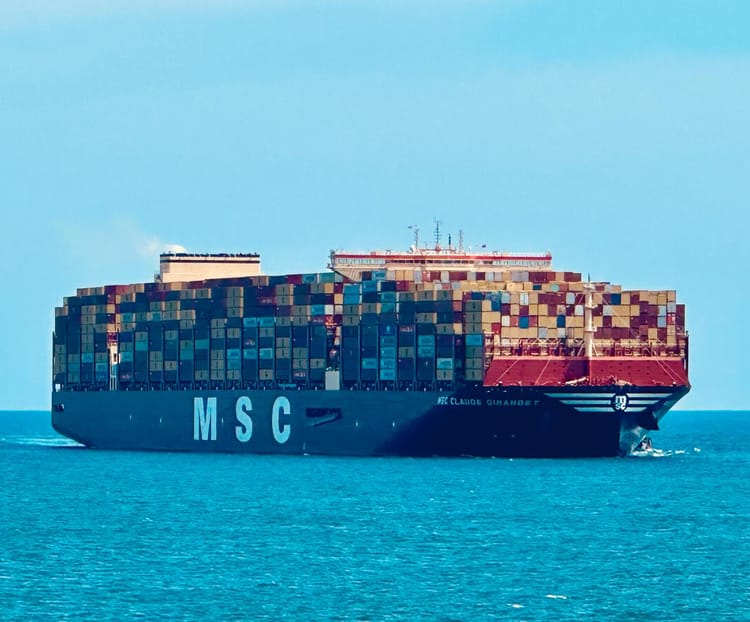Trivandrum (Trial) Port Outperforms South Indian Counterparts

Transshipment operations at Trivandrum International Seaport in South India began on July 11 this year with the arrival of the mother vessel "San Fernando". There were no significant operations in August. In September, the port transshipped/re-stowed 48,586 containers from the next 12 ships, ranking first among the 12 ports/terminals in South India, and that too before completing three months of trial operations!
These statistics from the 12 ports/terminals in South India are teaching us several new lessons. We usually expect transshipment to occur at ports like Tuticorin, Vallarpadam, and Mangalore, which are slightly closer to the international shipping channel. However, Mangalore port is not even in the container count for September. Vallarpadam handled only 7,693 containers, and the three terminals in Tuticorin combined transshipped just 1,194 containers. A very clear picture emerges that if Trivandrum Port had not started operations, all 48,586 containers would have been handled by foreign ports.
Trivandrum Port not only outperformed all other ports in the field of transshipment but also single-handedly handled more than double the transshipment of all 11 other ports combined! Did other ports anticipate this lone surge? As Trivandrum Port surpasses century-old South Indian ports in just one month, another big deception story is coming to light.
It seems like ten or fifteen years ago, during the final stages of approval for the Vallarpadam terminal, a high-ranking official from Trivandrum arrived in Delhi with a file related to the approval of Trivandrum Port. The shipping ministry was under the charge of a coalition party in the UPA government. As soon as the minister saw the file, he reacted as if he had seen red. It's not a figure of speech; the minister literally threw the Trivandrum Port file! Today, as we witness the surge of Trivandrum Port, it's evident that the minister threw away not just the file, but also India's future. Those working for Trivandrum Port had this future vision earlier, but the central and state governments were not ready to acknowledge it. In fact, it's clear today that the then government and officials were working to prevent Trivandrum Port from coming into existence for the sake of the Vallarpadam project. Administrations that betrayed the country itself!
There's another comparison in the aforementioned transshipment statistics that often goes unnoticed. Although ships started arriving on July 11, it was with the arrival of MSC Deila on August 30 that ships began coming continuously. That's when MSC's operations here can be said to have begun. After about 15 days, a new terminal also started operations at Tuticorin, a major port in India. JM Baxi group won the contract to operate the Tuticorin International Container Terminal for a long term. The port with a 14.2-meter draft has a 370-meter berth. The terminal with a 10-hectare backup area is expected to handle 6 lakh containers. Some observations made by Shipping Minister Sarbananda Sonowal during the project inauguration are noteworthy. The minister explained how direct mainline connectivity will allow exporters to ship their cargo straight to their destinations, bypassing the need for transshipment at other ports, eliminating delays and will save $200 per container making Indian exports more competitive. Additionally, it is projected to yield annual forex savings of $4 million, as reported by Business Line on 16th Sept'24.
JM Baxi, with over 100 years of experience in the shipping and cargo sector, has taken over the contract for Tuticorin port. They are giants in the shipping and cargo field when considering their experience. However, the start of the Tuticorin Terminal should concern us. The ship Rio Grande Express, with a capacity of 4253 containers, arrived there on the inauguration day, 16.9.24. Even after a month, a second ship hasn't arrived at the JMB terminal. There could be many reasons. At Trivandrum Port too, only three ships arrived in the first month. But the Adani group's alliance with MSC was able to quickly increase that. It's not difficult for JMBaxi to establish a tie-up with such a major shipping company. But there are some other challenging issues that have existed before. One is that it's about 75 nautical miles away from the main shipping route. Another limitation is that the berth has a depth of only 14.2 metres. These are pretty much the same issues that Vallarpadam port faces. But the authorities, knowing all this, have been deceiving the country by keeping such limitations secret until now. The world learned about this deception through Trivandrum Port's September statistics. Even after knowing that 11 ports/terminals in South India are not capable of handling transshipment cargo, shouldn't the massive loss incurred by relying on ports in Sri Lanka, Dubai, and Singapore to handle Indian cargo be recovered from those responsible?
To understand the extent of this loss, we need to know India's import-export container statistics as well. According to the latest available data, India's Exim volume in 2022 was 19,717,168 TEU. The Cargo Talk portal (cargotalk.in) explains that about 4.6 million of this was transshipment, of which about 4.2 million was handled by ports in other countries. According to their calculations, the country incurs a loss of US$200-250 million annually. If we calculate based on the US$200/container rate mentioned by the Shipping Minister in Tuticorin, we can understand that this is about US$840 million. That's an annual loss of about IN₹7000 crore!
The transshipment statistics mentioned above make it clear to us that some people sitting here are providing such a big facility to foreign countries/ports. In just one month, these 11 ports claiming to be major ports in the country were able to handle only 35% of South India's transshipment cargo. When we learn that Trivandrum port alone handled 64.31% of transshipment cargo, those responsible should also clarify what should be done with those who have tried to kill this project until now.
Another interesting fact is coming to light. Out of the 31 ships (as of 19th Oct'24) that have come to Trivandrum port so far, 5 have gone to ports like Djibouti, Salalah, and Chittagong. In other words, Trivandrum Port has started transshipping not just for India but for other countries as well. This means that not all of the 48,586 containers handled here are Indian cargo, which reduces the loss estimation and increases the profit estimation we did earlier! In any case, there is no doubt that Trivandrum port will show us many colourful sights in the coming days.
This article © 2024 by Motherport News is licensed under CC BY 4.0



